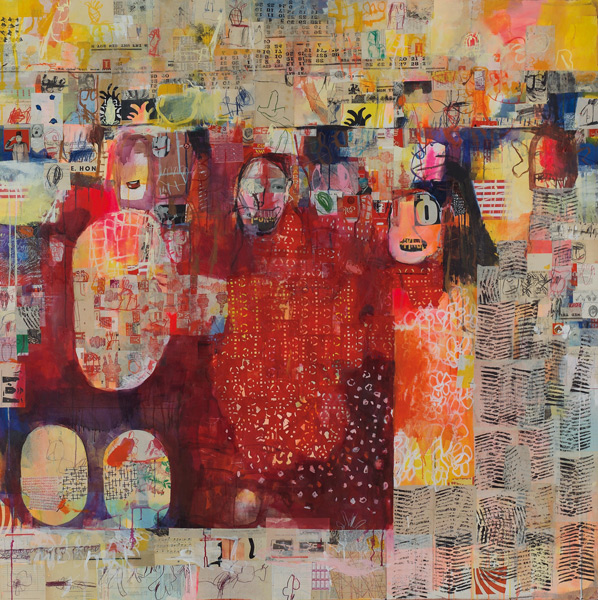
Is This Collage? by Benoit Deptelteau
Is this collage? Those three words have been ringing in our heads in the last months, when we looked at, sorted out, and reviewed more than 300 artists’ submissions. These three words can also easily sum up dozens of questions we received from artists interested in having their work published in the magazine. Although we were surprised, if not overwhelmed, by the massive response we received, it also made us realize that it would be useful to articulate some elements of an answer to the infamous question. It wasn’t in the plan but, along the road, we decided to include that reflection in the issue to delineate our definition of collage.
People like shelves, boxes, and tags. It is a practical way to sort things physically and, let’s be honest, it is psychologically comforting. Our heads like it when it is all neatly organized and smells like flowers in the spring. When it comes to visual arts, these categories are usually given to the technique used to create the work. The usually accepted definition of collage refers to the result of applying various materials to a surface with glue.
But it’s not that simple. When Picasso and Braque initiated the use of collage in art, their first attempts already combined it with painting. Ever since, artists have been pushing the boundaries and deconstructing the traditional forms by combining mediums in every possible way.
The work we reviewed reflected that reality, about half the work being mixed media including collage. The enormous number of images we received, probably around 1500, presented us with a strong panorama of what is being glued around the world right now. That is priceless when it comes to fulfilling our mission. The last thing we wanted was to be locked into a hermetic and reductive definition of collage that would have contributed to the exclusion of a significant portion of the work.
However, we still encountered situations that necessitated a definition of the limits. Of course, we never considered measuring or quantifying the ratio of glued items by surface percentage or number of elements. Even that would be completely pointless because some of the work raises essential issues about the practice of collage without actually involving any glue and paper. Like Max Ernst once wrote: “While feathers make plumage, glue does not make collage.” All right then, let’s forget the glue to concentrate on the helpful elements that will allow us to draw a significant portrait of collage, to understand the whole process, from the intention to its materialization.
Our interest is directed towards these major notions and any work of art that exists within, challenges, or confronts them. The act of creation must involve the selection of existing images, objects, or fragments of any type, being fully aware that they carry cultural references and connotations in our collective unconscious. Then, the process must incorporate the juxtaposition of such items, to create a new composition in which the relation between elements initiates the concept. Finally, the work must underlie the intention to express structured ideas that might, but not necessarily, be included in a wider artistic, social, political, or cultural statement.
So it seems that this body of work interacts with the three poles we mentioned: Is it collage then? Well, I still don’t know, but I would be delighted to talk about it.
PURCHASE ISSUE TWO | SUBSCRIBE | FACEBOOK
Image:
China Cat Sunflower
by Michel Meyer
71” x 71”
collage, mixed media on canvas
2008
